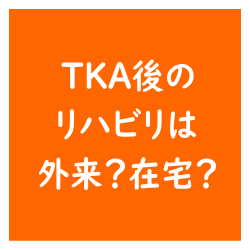目次
凍結肩における動的な肩関節外転運動中の三角筋と肩腱板筋群との関連性
理学療法士・作業療法士が肩腱板損傷例を対象として運動療法を行うにあたっては,肩関節のバイオメカニクスに関する理解が必須となります.
中でもアウターマッスルとしての三角筋とインナーマッスルとしての肩腱板筋群が協調して活動することが求められます.
今回は動的な肩関節外転運動中における三角筋と肩腱板筋群の活動に着目した報告をご紹介させていただきます.
今回ご紹介する論文
Am J Sports Med. 2018 Jul;46(8):1919-1926. doi: 10.1177/0363546518768276. Epub 2018 May 9.
Relationship Between Deltoid and Rotator Cuff Muscles During Dynamic Shoulder Abduction: A Biomechanical Study of Rotator Cuff Tear Progression
Felix Dyrna 1, Neil S Kumar 2, Elifho Obopilwe 2, Bastian Scheiderer 1, Brendan Comer 2, Michael Nowak 2, Anthony A Romeo 3, Augustus D Mazzocca 2, Knut Beitzel 4
Affiliations expand
PMID: 29741391 DOI: 10.1177/0363546518768276
今回ご紹介する論文は2018年に掲載された比較的新しい論文です.
研究の背景
Background: Previous biomechanical studies regarding deltoid function during glenohumeral abduction have primarily used static testing protocols.
腱後上腕関節における外転運動時の三角筋の機能に関する過去の生体力学的研究では,主に静的な運動におけるプロトコルが使用されてきました.
この研究では動的な肩関節外転運動中の三角筋と肩腱板筋群の活動性が,腱板断裂サイズによってどのように変化するかを明らかにすることを目的としております.
研究の仮説
Hypotheses: (1) Deltoid forces required for scapular plane abduction increase as simulated rotator cuff tears become larger, and (2) maximal abduction decreases despite increased deltoid forces.
(1)肩甲骨面上における外転運動時の三角筋に加わる力は,模擬腱板断裂が大きくなるにつれて増加し,(2)三角筋に加わる力が増加しても最大外転運動域は減少するといった仮説がたてられております.
研究デザイン
Study design: Controlled laboratory study.
研究デザインは実験室内での対照研究となっております.
研究の方法
Methods: Twelve fresh-frozen cadaveric shoulders with a mean age of 67 years (range, 64-74 years) were used. The supraspinatus and anterior, middle, and posterior deltoid tendons were attached to individual shoulder simulator actuators. Deltoid forces and maximum abduction were recorded for the following tear patterns: intact, isolated subscapularis (SSC), isolated supraspinatus (SSP), anterosuperior (SSP + SSC), posterosuperior (infraspinatus [ISP] + SSP), and massive (SSC + SSP + ISP). Optical triads tracked 3-dimensional motion during dynamic testing. Fluoroscopy and computed tomography were used to measure critical shoulder angle, acromial index, and superior humeral head migration with massive tears. Mean values for maximum glenohumeral abduction and deltoid forces were determined. Linear mixed-effects regression examined changes in motion and forces over time. Pearson product-moment correlation coefficients ( r) among deltoid forces, critical shoulder angles, and acromial indices were calculated.
対象は平均年齢67歳(64~74歳)の12名の新鮮凍結肩をとなっております.
棘上筋腱と三角筋前・中・後部線維における腱を個々の肩シミュレーターのアクチュエータに装着しております.
三角筋に加わる力と最大外転運動範囲はについて,以下の断裂パターン毎に測定を行っております.
- 損傷なし
- 肩甲下筋(SSC)単独
- 棘上筋(SSP)単独
- 前上方(SSP+SSC)
- 後上方(棘下筋(ISP)+SSP)
- および大規模(SSC+SSP+ISP)
動的運動時の測定では光学的な装置を用いて3次元運動を追跡しております.
透視およびCTを用いて,肩関節可動域,Acromial Index,上腕骨頭の上方偏位を測定しております.
解析には平均値が用いられております.
線形混合回帰モデルを用いて,時間経過と筋力の変化を調査しております.
三角筋にかかる力と肩外転角度,Acromial Indexの関係を分析しております.
研究の結果
Results: Shoulders with an intact cuff required 193.8 N (95% CI, 125.5 to 262.1) total deltoid force to achieve 79.8° (95% CI, 66.4° to 93.2°) of maximum glenohumeral abduction. Compared with native shoulders, abduction decreased after simulated SSP (-27.2%; 95% CI, -43.3% to -11.1%, P = .04), anterosuperior (-51.5%; 95% CI, -70.2% to -32.8%, P < .01), and massive (-48.4%; 95% CI, -65.2% to -31.5%, P < .01) cuff tears. Increased total deltoid forces were required for simulated anterosuperior (+108.1%; 95% CI, 68.7% to 147.5%, P < .01) and massive (+57.2%; 95% CI, 19.6% to 94.7%, P = .05) cuff tears. Anterior deltoid forces were significantly greater in anterosuperior ( P < .01) and massive ( P = .03) tears. Middle deltoid forces were greater with anterosuperior tears ( P = .03). Posterior deltoid forces were greater with anterosuperior ( P = .02) and posterosuperior ( P = .04) tears. Anterior deltoid force was negatively correlated ( r = -0.89, P = .01) with critical shoulder angle (34.3°; 95% CI, 32.0° to 36.6°). Deltoid forces had no statistical correlation with acromial index (0.55; 95% CI, 0.48 to 0.61). Superior migration was 8.3 mm (95% CI, 5.5 to 11.1 mm) during testing of massive rotator cuff tears.
最大肩外転角度は正常肩と比較し棘上筋断裂で27.2%,棘上筋+肩甲下筋断裂で51.5%,広範囲断裂で65.2%有意に減少しております.
三角筋全体への負荷は,正常な肩関節と比較して,棘上筋+肩甲下筋断裂で108.1%,,広範囲断裂で57.2%有意に増加しております.
また三角筋前部線維に加わる力と肩関節外転角度に負の相関関係がみられた(r=-0.89, p=0.01).
三角筋に加わる力はAcromial Indexと有意な関係は認められておりません.
なお広範囲断裂例における骨頭の上方偏位は8.3mmでありました.
研究の結論
Conclusion: Shoulders with rotator cuff tears require considerable compensatory deltoid function to prevent abduction motion loss. Anterosuperior tears resulted in the largest motion loss despite the greatest increase in deltoid force.
腱板断裂例では,外転運動時にかなり大きい代償的な三角筋機能が必要であることが明らかとなりました.
また三角筋への負荷を増加させても,前上方筋群の断裂例においては機能損失が大きいことが明らかとなりました.
をもたらした。
臨床的な関連性
Clinical relevance: Rotator cuff tears place more strain on the deltoid to prevent abduction motion loss. Fatigue or injury to the deltoid may result in a precipitous decline in abduction, regardless of tear size.
腱板断裂例では,外転運動時に三角筋にかなり大きな負荷がかかります.
腱板断裂の大きさにかかわらず,三角筋への疲労や損傷によって外転運動が急激に困難となる可能性があります.
今回は動的な肩関節外転運動中における三角筋と肩腱板筋群の活動に着目した報告をご紹介させていただきました.
腱板断裂例においては三角筋への運動負荷が大きいこと,特に棘上筋・肩甲下筋損傷例においてはその傾向が顕著であることがポイントですね.








コメント